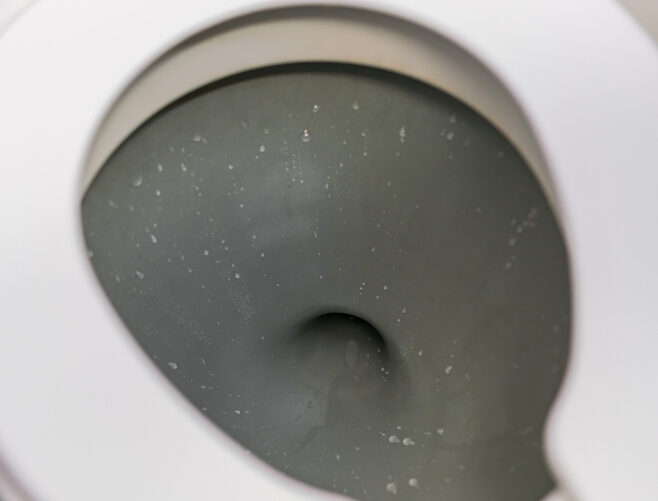Introduction:
Discovering mold in your toilet can be unsettling. It raises questions about cleanliness and hygiene, but can it also raise concerns about your health, particularly the possibility of diabetes? In this blog, we’ll explore the curious connection between moldy toilets and diabetes, sorting through the facts and dispelling any misconceptions.
Understanding Mold in Toilets:
Before diving into the diabetes connection, it’s essential to understand why mold might appear in your toilet. Mold thrives in damp and humid environments, making bathrooms, especially toilets, prime spots for its growth. Factors like poor ventilation, leaks, and infrequent cleaning can contribute to mold growth.
Now, let’s tackle the pressing question: Can mold in the toilet indicate diabetes?
The Diabetes Connection:
Mold in your toilet is unlikely to be a direct indicator of diabetes. Diabetes is a complex metabolic disorder primarily related to how your body processes glucose (sugar). However, there are indirect ways in which diabetes and moldy toilets might be connected:
- Neglected Cleaning: People with diabetes, especially when dealing with uncontrolled blood sugar levels, can experience frequent urination and increased thirst. These symptoms might lead to more bathroom visits. If cleaning routines are neglected due to health issues, mold growth can occur.
- Weakened Immune System: Individuals with poorly managed diabetes may have weakened immune systems, making them more susceptible to mold-related health issues. Mold can produce allergens that may exacerbate respiratory problems in vulnerable individuals.
- Lifestyle Factors: Lifestyle choices, including diet and physical activity, play a significant role in diabetes management. In some cases, a lack of attention to overall health may lead to both diabetes-related health concerns and a moldy toilet due to neglect.
- Stress and Health Management: Stress can be a factor in both diabetes management and household cleanliness. High stress levels can affect blood sugar control and may contribute to the neglect of cleaning responsibilities, potentially leading to mold issues.
- Environmental Factors: The environment in which you live can also influence both health and cleanliness. Mold growth can be more prevalent in areas with high humidity or where leaks and poor ventilation are common.
Learn more on the diet for diabetes management – Personalized Dietary Counseling for Diabetes
Preventing Mold Growth:
To address the issue of mold in the toilet and the potential health concerns associated with it, consider these preventive measures:
- Regular Cleaning: Maintain a routine cleaning schedule for your bathroom, including the toilet. Pay attention to corners, cracks, and areas with poor ventilation where mold is likely to grow.
- Address Leaks: Fix any leaks or water seepage issues promptly. Mold thrives in damp environments, so reducing moisture is key to prevention.
- Ventilation: Ensure proper ventilation in your bathroom. Use exhaust fans or open windows to allow moisture to escape.
- Control Blood Sugar: If you have diabetes, work closely with your healthcare provider to manage your blood sugar levels effectively. This can help reduce excessive urination and excessive thirst.
- Healthy Lifestyle: Adopt a healthy lifestyle that includes a balanced diet, regular physical activity, and stress management. These factors are critical for diabetes management and overall well-being.
- Home Environment: Take steps to maintain a clean and healthy home environment. This includes addressing any potential sources of mold growth, such as leaks or humidity issues.
- Professional Mold Removal: If you encounter extensive mold growth in your home, it’s essential to consult with professionals for safe and thorough removal.
What is the connection between diabetes and urine composition?
Mold and respiratory issues are often linked, as exposure to mold, especially in damp environments, can lead to serious respiratory problems. Mold releases spores into the air, triggering allergic reactions and worsening conditions such as asthma. Prolonged mold exposure can cause respiratory infections and other health complications, particularly in individuals with weakened immune systems or pre-existing respiratory conditions.
Diabetes and Urine Composition
Diabetes may also affect urine composition in several ways:
- Glucose: In healthy individuals, the kidneys filter blood and reabsorb glucose. However, in people with uncontrolled diabetes, excess blood sugar spills over into the urine.
- Urine Volume: Glucose in the urine acts like a diuretic, leading to increased urine production (polyuria) as the body attempts to expel excess glucose.
- Electrolytes: Increased urination can result in the loss of key electrolytes like sodium and potassium, crucial for maintaining fluid balance and nerve function.
Here’s a table summarizing the effects of diabetes on urine composition:
| Substance | Effect in Diabetes |
| Glucose | Increased levels in urine |
| Urine Volume | Increased |
| Electrolytes (Sodium, Potassium) | Potential loss due to increased urination |
What is the connection between urine composition and toilet mold?
Several factors, including high sugar levels in urine, are common in people with diabetes and can influence mold growth in toilets. Toilet mold thrives on sugar, and when glucose is present in urine, it can contribute to more frequent mold growth in the toilet bowl. This is why diabetes and toilet mold often appear linked.
However, diabetes isn’t the only cause of mold growth in toilets. Mold spores, common in the environment, find ideal growing conditions in damp, poorly ventilated bathrooms. Key reasons for toilet mold growth include:
- Poor Ventilation: Insufficient airflow can trap moisture in bathrooms, creating the perfect environment for mold to thrive.
- Infrequent Cleaning: Mold spores can accumulate and establish themselves in the toilet bowl without regular disinfecting.
- Moisture Buildup: Leaky pipes or faulty plumbing can lead to constant dampness, which encourages mold growth.
By addressing these issues, you can reduce the likelihood of mold growth in your toilet.
What else causes toilet mold?
Mold growth in toilets has its roots in moisture, warmth, and organic materials, which act as food sources. The mold survives on it. That’s why bathrooms and toilets, in particular, are a perfect breeding ground for mold, as they stay predominantly humid and warm. Noticeable signs of mold growth in the toilet include black, green, white, or orange patches. An earthy smell is also not uncommon. Besides the commode, pay attention to the toilet tank as a favorite place for mold growth, which is often overlooked.
Pro Tip for Preventing Mold Growth: Ensure proper ventilation, regular cleaning, and moisture control in bathrooms to reduce the chance of mold establishing itself.
In Conclusion:
While mold in your toilet is not a direct indicator of diabetes, it can be a reminder of the importance of maintaining a clean and hygienic environment, especially if you have diabetes or other health conditions. Preventing mold growth is a matter of regular cleaning, proper ventilation, and addressing any underlying health concerns.
If you suspect mold-related health issues or have concerns about diabetes management, consult with healthcare professionals who can provide guidance and support. Remember, good health practices and a clean living environment contribute to overall well-being, and understanding the factors at play can help you maintain a healthy and comfortable home.
Frequently Asked Questions
- Can mold exposure affect diabetes management?
Yes, mold exposure can indirectly affect diabetes management. People with diabetes are at a higher risk of developing infections, including respiratory issues from mold exposure. Additionally, high glucose levels in urine can contribute to mold growth in toilets, which may indicate poor blood sugar control. Mold can also exacerbate respiratory issues, making it harder to manage overall health, especially in diabetic individuals. - What are the common causes of mold growth in the toilet?
Toilet mold growth is often due to several factors, including:- High Humidity: Damp environments, especially bathrooms with poor ventilation, encourage mold growth.
- Infrequent Cleaning: Mold spores thrive in uncleaned, moist areas.
- Leaking Pipes: Moisture from leaks creates ideal conditions for mold.
- Diabetes: High sugar levels in the urine of individuals with diabetes can fuel toilet mold growth.
- How can I identify mold growth in my toilet?
You can identify toilet mold growth by noticing dark spots or slime in the toilet bowl, especially under the rim or near the water line. The slime often appears black, green, or pink and may be accompanied by a musty odor. Despite regular cleaning, persistent mold may indicate underlying issues like high humidity or diabetes-related glucose in urine. - What specific steps can I take to prevent mold in my toilet?
To prevent toilet mold growth, consider the following steps:- Improve Ventilation: Ensure your bathroom is well-ventilated to reduce humidity.
- Clean Regularly: Use disinfectants to clean your toilet bowl frequently.
- Fix Leaks: Repair any leaking pipes or fixtures to eliminate excess moisture.
- Monitor Blood Sugar: For individuals with diabetes, controlling blood sugar levels can help prevent glucose from entering the urine and encourage mold growth.
Other Health Articles:
Can Type 2 Diabetes Turn Into Type 1? Exploring the Complexities of Diabetes Transitions
Understanding Type 4 Diabetes: Symptoms and Effective Prevention Strategies
Effective Strategies for Managing Swollen Feet Due to Diabetes
Understanding Diabetes: Causes, Types, and Risk Factors
The Role of Nutrition in Diabetes Management
Personalized Dietary Counseling for Diabetes
“Humalog vs Novolog”, for Effective Blood Sugar Control, A Comprehensive Comparison
Understanding the Link Between Diabetes and Dry Eyes
Is Diabetes Contagious? Debunk the Myth
Normal Blood Sugar Levels Chart By Age: Understanding Optimal Health
A Comprehensive Guide on How to Test Blood Sugar at Home
Diabetic Retinopathy: Causes, Symptoms, and Risk Factors
Busting the Myth: Sweet Corn’s Surprising Impact on Blood Sugar
Disclaimer:
Medical Advice: The information provided in this blog post is for educational purposes only and should not be considered as a substitute for professional medical advice, diagnosis, or treatment. Always consult with a qualified healthcare professional for personalized guidance regarding your specific medical condition.
Accuracy of Information: While we strive to provide accurate and up-to-date information, the field of medicine and viral fevers is constantly evolving. The content in this blog post may not reflect the most current research or medical guidelines. Therefore, it is advisable to cross-check any information provided with reliable sources or consult a healthcare professional.
Individual Variations: The symptoms, causes, treatment options, and preventive measures discussed in this blog post are general in nature and may not apply to everyone. It is important to remember that each individual’s situation is unique, and personalized medical advice should be sought when making healthcare decisions.
External Links: This blog post may contain links to external websites or resources for additional information. However, we do not endorse or have control over the content of these third-party websites. Accessing these links is done at your own risk, and we are not responsible for any consequences or damages that may arise from visiting these external sources.
Results May Vary: The effectiveness of treatment options or preventive measures mentioned in this blog post may vary from person to person. What works for one individual may not work the same way for another. It is essential to consult with a healthcare professional for personalized advice tailored to your specific needs.

Chief Consultant Diabetologist & Preventive Cardiologist, Consultant Functional and Lifestyle Medicine, Geriatrician & Family Medicine Specialist, Nutritionist, Life Counsellor and Wellness Coach, Motivational Speaker & Columnist, NLP Practitioner and Hypnotherapist, Bach flower Therapist


